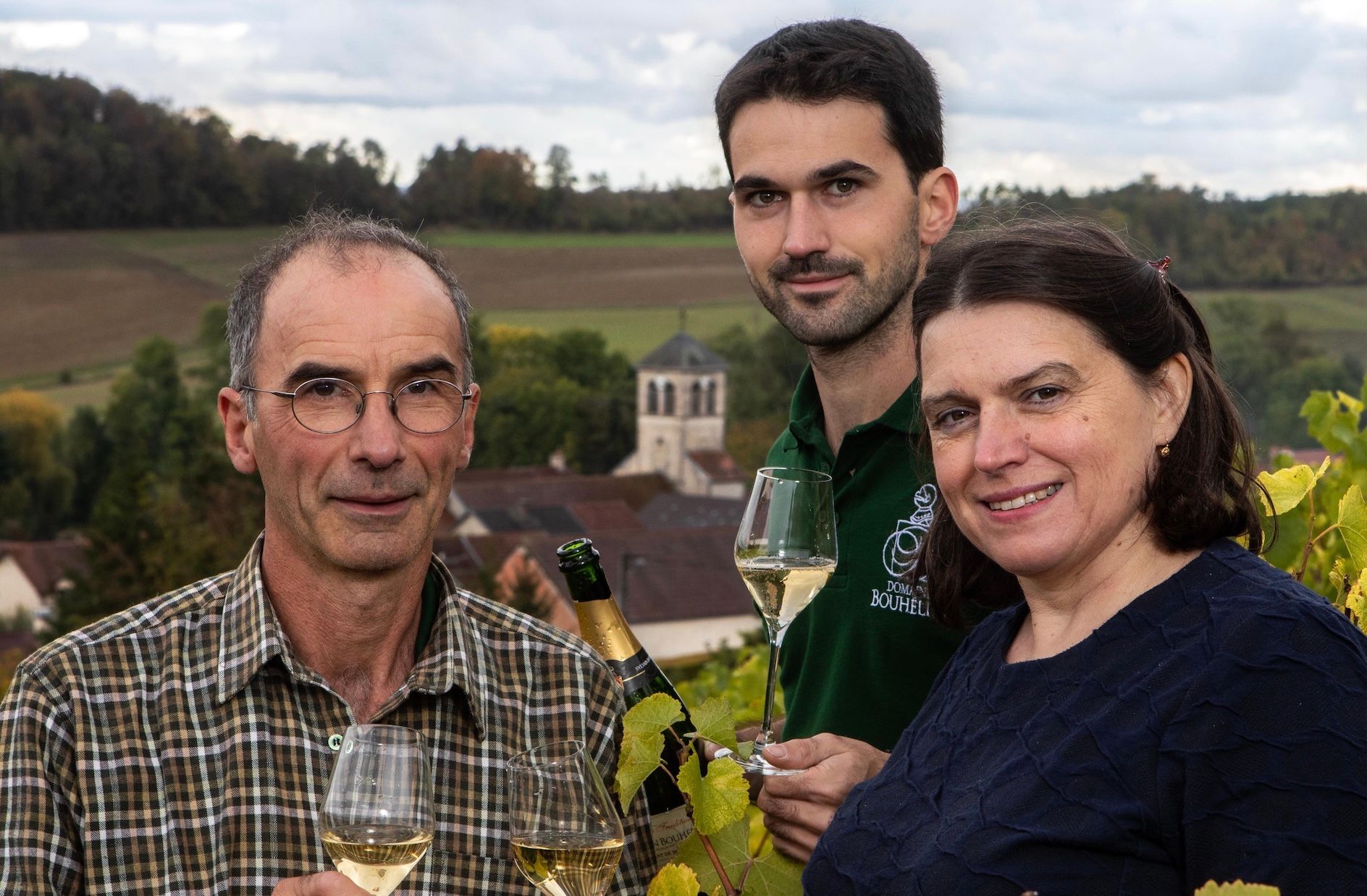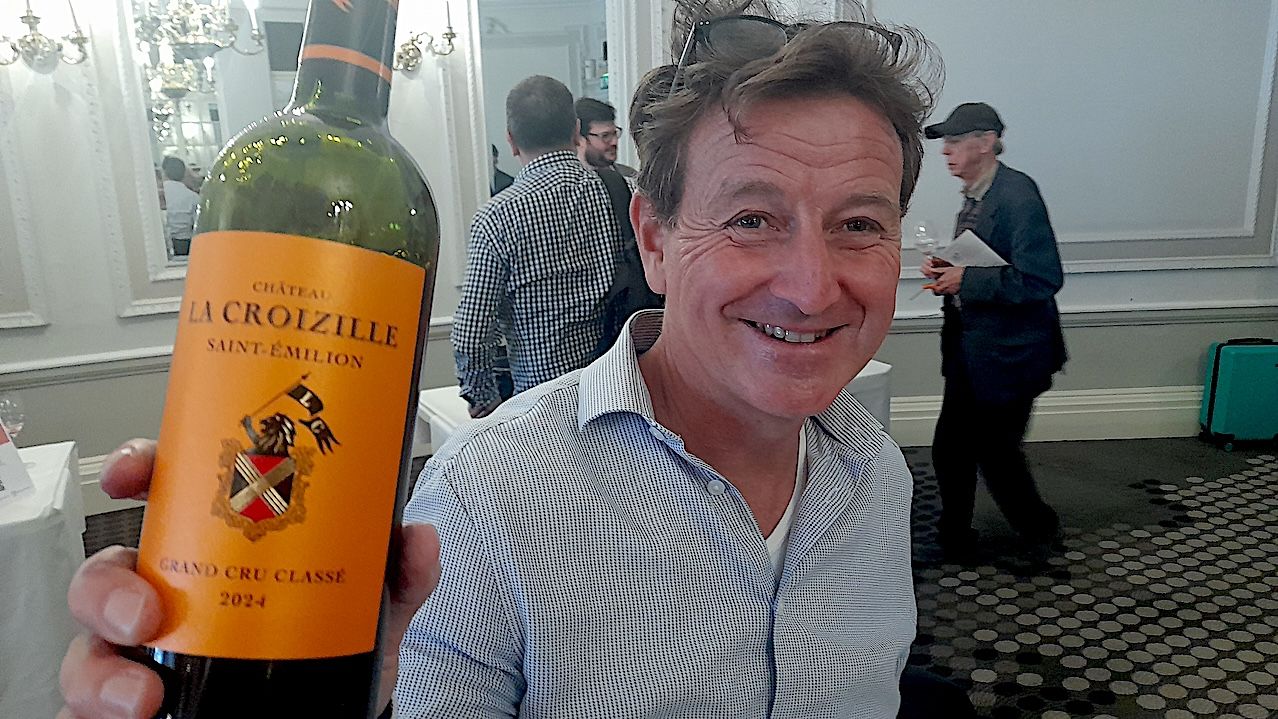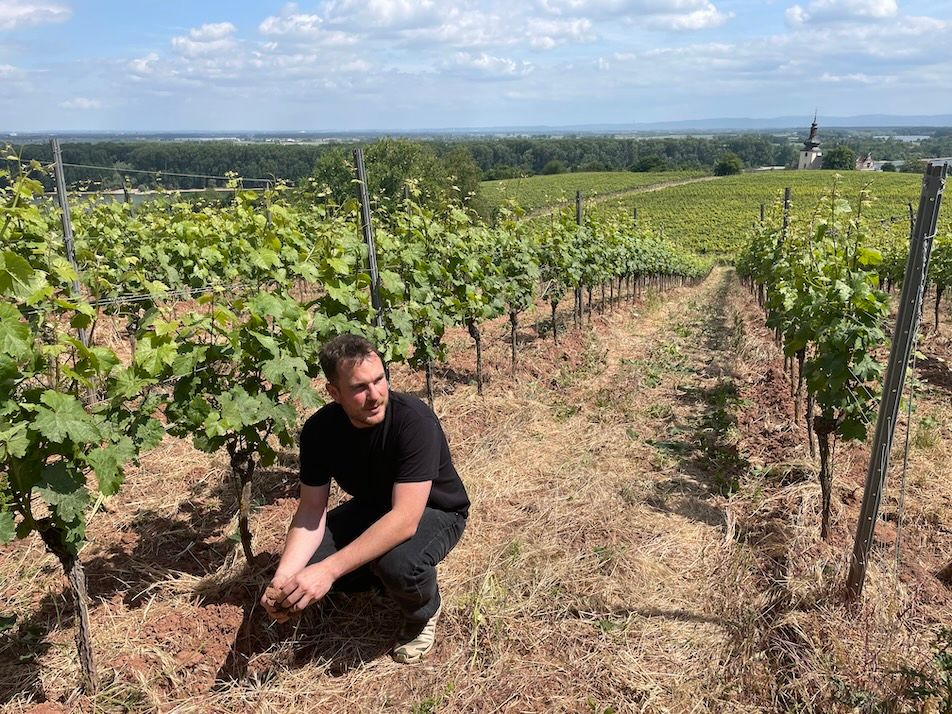Domaine Bouhélier will be taking part in next month’s London Wine Fair as part of the Great Bourgogne Wine Reunionorganised by theBourgogne Wine Board on June 7.
Over the past few years there has been a huge surge of interest in Crémant de Bourgogne, as consumers look for better value alternatives to Champagne, and sparkling wines that offer more character than ubiquitous Prosecco.
At the same time, the quality of Crémant de Bourgogne wines, which are made in the same traditional method way as those in Champagne, have improved enormously, while remaining considerably more affordable. Bourgogne is now renown for making premium sparkling wines in its own right.
While the first sparkling wines in the region were planted back in the 1820s, a combination of Phylloxera, a succession of poor harvests and then economic upheavals led the vineyards into inexorable decline, until their virtual disappearance betwsseen the two world wars. But by the end of the 1980s there was a collective movement for the vines to be restored, and in 1986 the abandoned plots were classified as AOC Bourgogne.
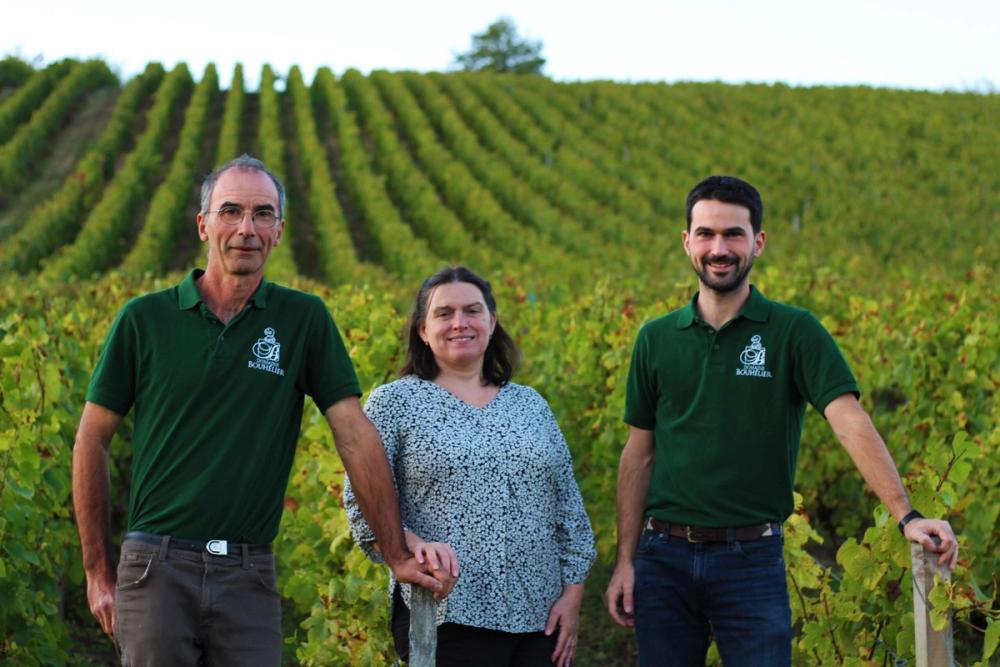
The Bouhélier family has become one of the most respected producers of Crémant de Bourgogne
One of the very first winemakers to spot an opportunity was Sylvain , founder of one of the longest-established and most respected Crémant de Bourgogne producers, the eponymous Domaine Bouhélier. He was able to snap up some land in Chaumont-le-Bois in the Châtillonnais region.
“My father took advantage of this incredible terroir alongside Champagne to create an estate with a much lower price for land. The appellation Crémant de Bourgogne was only created in 1975 and was not really known even in Bourgogne,” he says. “At the time Champagne alone dominated the quality sparkling wine market, so it was a crazy bet. It was difficult to find a place [for Crémant de Bourgogne].”
However, it was a bet that has paid off in spades, with Bouhélier producing its first harvest in 1990. The debut vintage was in 1993 with the first bottles being sold two years later. And in 2005, the winery went on to win its first gold medal at the national Crémant competition. Sylvain’s wife Anne joined the estate in 2006, with their son Paul started working for the family business 10 years later after gaining valuable experience working in the Grand Crus of Bourgogne, Alsace and Champagne, as well as spending two seasons working at Hambledon Vineyard in England.
Quality over quantity
The Domaine Bouhélier Estate now produces around 50,000 bottles a year, from eight hectares of vineyards. This is a fourfold increase in the area of land dedicated to vines since 1993, in line with the entire Châtillonnais region, which has seen the area devoted to vine production increase from 200 hectares in 2008 to around 350 hectares today, which Bouhélier describes as “great progression”.
However, he says his family have no desire to expand the reach of their own vineyards any further. “We want to remain a family business where we know each of our vines and each of our customers,” he says. “You have to make a choice between quantity and quality, and in wine it is difficult to do both.”
Top grapes
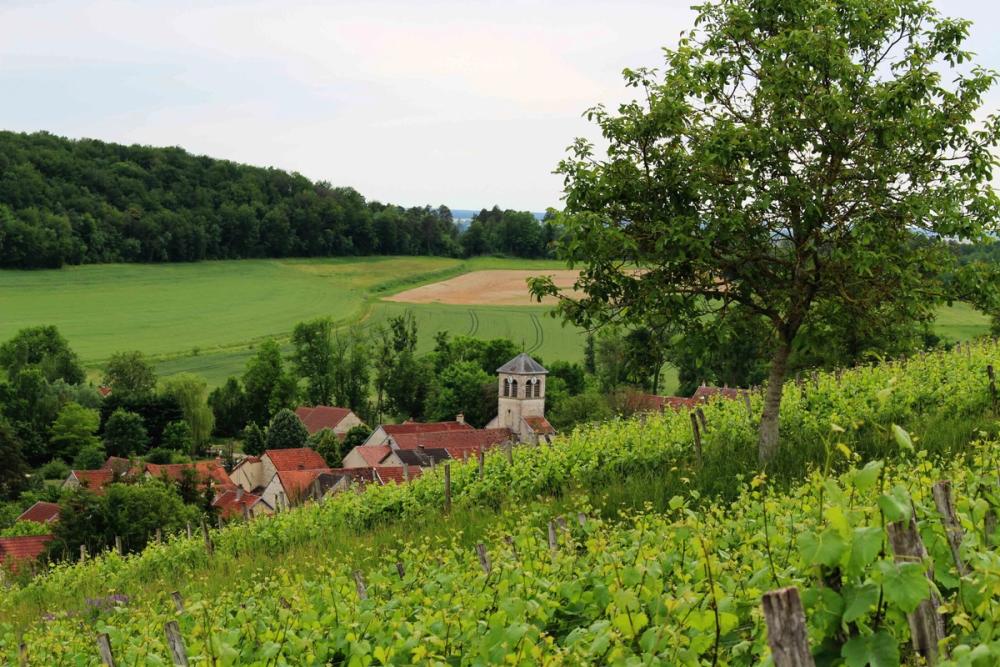
Chaumont-le-Bois in the Châtillonnais north west of Dijon
The key grapes grown in Bouhélier’s vineyards includes Pinot Noir, which accounts for 70% of total plantings, with the remaining vines comprising 20% Chardonnay and 10% Pinot Blanc.
“Pinot Noir offers an excellent balance between fruitiness and finesse,” says Bouhélier. “It is more vinous than Chardonnay and brings a lot of indulgence to our cuvées. The Chardonnay is more austere when young, but brings freshness to the Pinot Noir.“
Pinot Blanc is rarely grown in Bourgogne, but provides, claims Bouhélier, a good balance between Pinot Noir and Chardonnay. “With these three grape varieties we produce five very different cuvées,” he explains. The “Terroirs Châtillonnais” cuvée – which will be shown at the London Wine Fair as part of The Great Bourgogne Reunion organised by the Bourgogne Wine Board – is a blend of three grape varieties, and, he says, “is a very balanced cuvée that has made a success of our estate since its inception”.
The estate also produces a rosé, Cuvée Eponine, which is made from Pinot Noir, and a Blanc de Blancs Cuvée Trésor made from Chardonnay grapes. Completing the line-up is a Cuvée Celtissime which is vinified in oak barrels before ageing for six years in the cellar.
Upgrades and investments
”Overall, we like Crémant de Bourgogne that have been aged for at least two years so that they have a nice complexity,” explains Bouhélier, who says their years of viticulture experience and increased confidence have resulted in some key changes in the way that they make the wine. While the basic method remains the same, considerable investment over recent years has enabled the estate to improve the quality.
“At the beginning my father had few means to invest in quality equipment, even if the quality of the grapes was a good basis, it took time before being able to work in good conditions.”
The Bouhélier winery now benefits from the very best equipment, including the latest generation Coquard hydraulic press which enables better extraction of the grape juice by having two plates, one immobile and one moved by a piston, which replicates the traditional vertical Champagne press.
Additionally, temperature-controlled tanks and new cellars have all helped to improve the quality of the wine. “Our way of making wine has also changed because we have gained self-confidence, and we are increasingly seeking to produce ambitious cuvées with very long ageing (more than 10 years) or with new techniques (without sulphites).”
Bouhélier is quite open about his ambitions for the winery, aiming to match the quality of some of the very best wine estates where he trained, including Domaine Hubert Lamy in Bourgogne, and Champagne DeSousa.
“There is an incredible amount of small details that ultimately make the difference in the wine,” he says, adding that the winery has reduced the use of sulphites, lengthened the ageing on the lees, and limited the pumping of the wine. “Making wine is not a recipe, you must have a clear vision of the wine you want to make and imagine the processes to be implemented to get there. There is an almost artistic vision that requires great know-how at the time of assembly.
Crémant de Bourgogne’s appeal
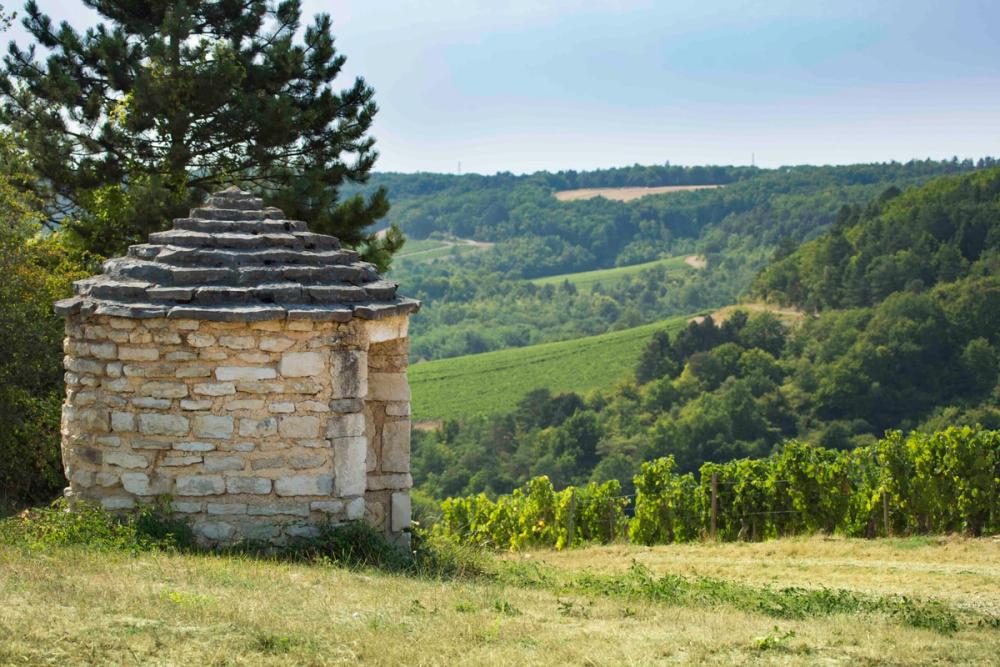
The Châtillonnais has become recognised as amongst the finest appellations to make Crémant de Bourgogne
So what is the great appeal of Crémant de Bourgogne? According to Bouhélier, Crémant de Bourgogne and especially Crémant produced in the Châtillonnais region, has much in common with Champagne to the extent that other than a handful of aficionados, few drinkers are able to tell them apart. “It is nevertheless difficult to generalise on an appellation as each winemaker works differently and each cuvée has its own character.”
However, Crémant de Bourgogne is matured for longer and has a little less acidity than others, which Bouhélier says is appreciated by consumers. “The quality of the Bourgogne terroirs is the greatest strength of Crémant de Bourgogne,” he continues. “On our estate, all our vines are planted on hillsides and exposed to the sun like the Premiers Cru of Chablis, and in these conditions we obtain the best quality wine.
He describes Crémant de Bourgogne as a “formidable weapon to ward off snobs and drinkers of labels”, adding that it is a wine that appeals across the generations and social classes.
While Crémant de Bourgogne has captured the imagination of wine drinkers in the UK and the US in recent years, the sparkling wine is not so highly acclaimed in the domestic market. In fact, Bouhélier claims that because of the dominance of Champagne in France, Crémant de Bourgogne is generally better known and appreciated in export markets.
“The English are lovers of Champagne and sparkling wines such as Prosecco and Cava which are very present on the market, much more than in France. There is a lot of curiosity and knowledge about sparkling wines in the UK market and after the Prosecco boom, consumers discovered that there was a diversity of sparkling wine outside of Champagne. I think it created curiosity among consumers.”
Focusing on exports
This has led to producers, such as Bouhélier, increasingly turning their attention to how their wines can perform in key export markets.
Bouhélier also points out that times of economic crisis have often been beneficial for Crémant de Bourgogne, when consumers ditch expensive Champagne for more affordable sparkling wine.
Currently, Bouhélier’s overseas sales account for around 10% of total sales, but it is a part of the business that is growing fast, having doubled the number of importers over the past five years.
Bouhélier is not interested in selling vast volumes of wine, but more concerned with ensuring that they deal with importers who value quality above all else.
“We have almost doubled our number of importers but not in volume terms, because we seek to reduce the biggest ones who consider our products as low-end and we have more small importers who do a great job. I think, however, that our volumes sold for export will increase rapidly, perhaps at least double in the next five years.”
The biggest hurdle to achieving this, he says, is the poor harvests of 2016, 2017 and 2021 have meant the company has been forced to limit sales. Bouhélier currently sells mainly to Europe, with Italy seeing a particular surge in sales over the past two years.
“The United States is also very interested in Crémant de Bourgogne and knows Bourgogne well,” says Bouhélier. “Americans seem to have a particular interest in rosé Crémant de Bourgogne.”
It is also shipping wine to Belgium, Austria and Costa Rica.
The winery is not resting on its laurels, and is currently eyeing up other export destinations. “I think that Asia, and in particular Japan, will soon be an important customer of Crémant de Bourgogne, though it is a more distant market that we know less about, but which seems promising.”
The bulk of the estate’s sales (65%) are at the cellar door, while they also supply a few wine shops and restaurants in France.
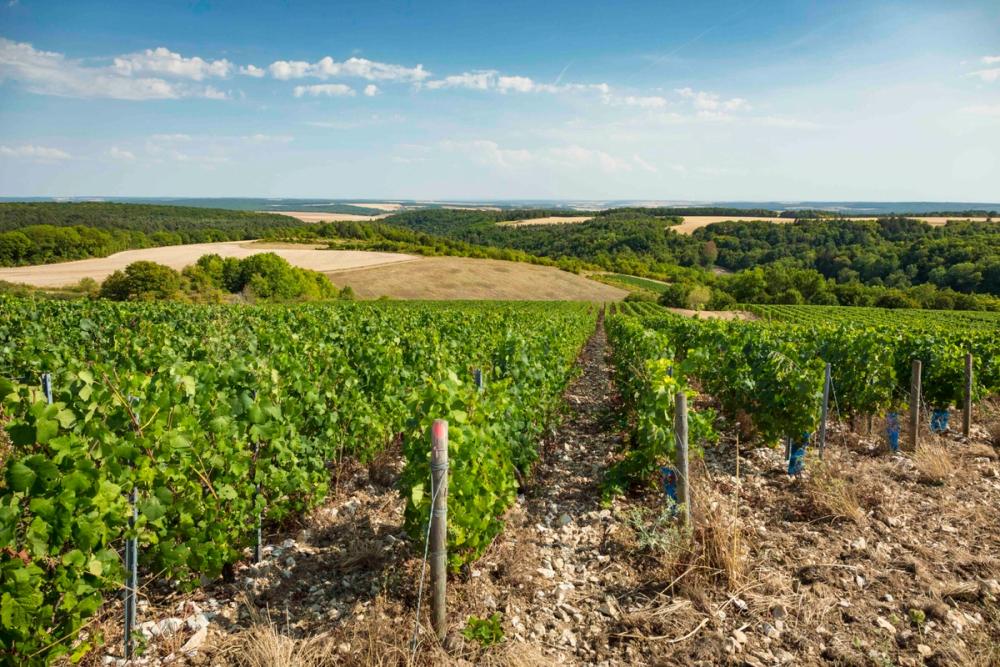
The Châtillonnais region has seen the area devoted to vine production increase from 200 hectares in 2008 to around 350 hectares today,
One of the biggest impact on sales in recent years was the Covid pandemic, which hit Bouhélier hard, with sales slumping by around 40% almost overnight as celebratory events such as weddings and parties were cancelled. Fortunately Bouhélier was able to store much of its unsold stock that it has been able to use to help support what was a low yielding harvest in 2021. It means its existing stock is now much in demand, while sales post Covid have surged, to reach record levels last winter.
“Our biggest problem now concerns shortages on glass bottles, boxes, labels, and spare parts for equipment in the vineyards.”
Sustainability
Sustainability is another topic at the top of the agenda for most winemakers, and Bouhélier is no exception. Its vines are surrounded by grass, hedges and trees to boost biodiversity, and the estate stopped using herbicides, insecticides and fungicides several years ago. They use organic products whenever possible, though are not yet certified as organic. Since 2018 the estate has been planting larger and taller vines to be naturally less susceptible to disease and introduce more biodiversity, something that was not allowed ten years ago.
“Viticulture is a story of tradition that is sometimes difficult to change – it takes time to change a vineyard and we are proud to be pioneers,” says Bouhélier, but stresses the changes taking place are a necessity.
The estate is planning on introducing new disease-resistant grape varieties, and other ways it can reduce its carbon footprint. One way it is making strides in that direction is by using lighter bottles weighing 775g, compared to the average bottle which weighs in at 835g. “While nobody sees the difference visually it is important on millions of bottles. Direct sale is the best choice to limit transport, but it is a thorny problem when our wines are increasingly in demand for export.”
Bouhélier is also keen to see more local labour used in the vineyards, rather than shipping in workers from Eastern Europe. “Today it has become almost normal to take workers from Eastern countries to do the harvesting and work in the vineyards. We make the opposite choice; we believe that we must give work to local people who participate in the economy of our villages.”
- You can find out more about Domaine Bouhélier at its website here.
- The Great Bourgogne Reunion tasting at London Wine Fair on June 7 will feature 34 negociants and producers who are travelling to London to take part. They will be showing a wide range of wines from across all the region’s AOCs that have been selected to be particularly suited to the UK market for their quality and versatility and value for money.
- It will include a tasting of 10 Chablis Premier Cru Climats from the right and left bank of the Serein.
- Domaine Bouhélier will be part of a focus on Crémant de Bourgogne to highlight different styles and the impact of vinification, terroir and ageing on the wines.
- The BIVB will also be hosting a press conference at 2pm as part of the event.
- The tasting takes place on the first floor of London Olympia as part of London Wine Fair on June 7 between 10am and 6pm.
- You can register to attend here.
